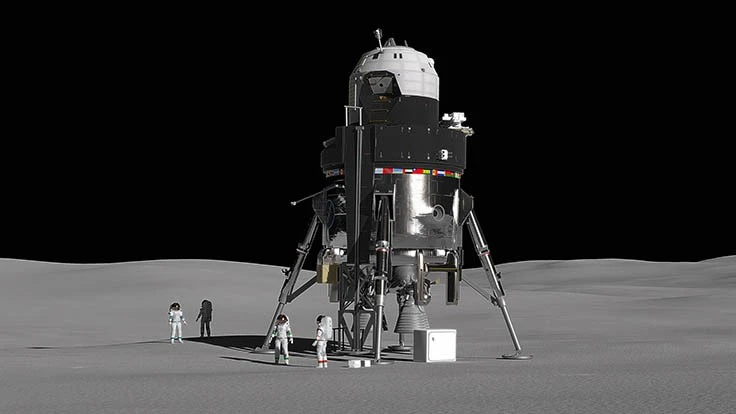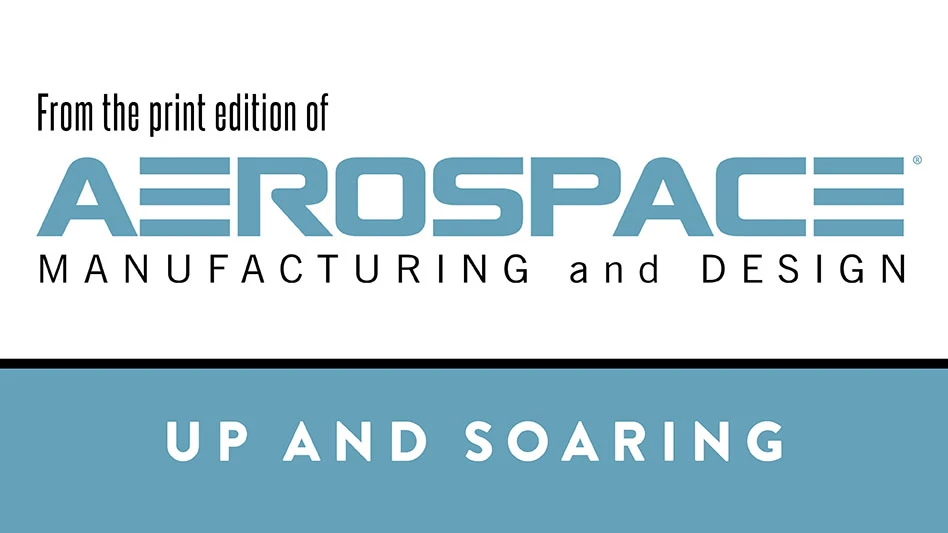
Lockheed Martin experts have revealed the company's crewed lunar lander concept and showed how the reusable lander aligns with NASA's lunar Gateway and future Mars missions.
In NASA's Exploration Campaign, the next step in human spaceflight is the establishment of a U.S.-led Lunar Orbital Platform-Gateway. Together with the Space Launch System (SLS) and Orion, the gateway is a stepping-off point for human lunar surface access, and missions to Mars.
The crewed lunar lander is a single stage, fully reusable system that incorporates flight-proven technologies and systems from NASA's Orion spacecraft. In its initial configuration, the lander would accommodate a crew of four and 2,000 lb. of cargo payload on the surface for up to two weeks before returning to the gateway without refueling on the surface.
"NASA asked industry for innovative and new approaches to advance America's goal of returning humans to the moon, and establishing a sustainable, enduring presence there," said Lisa Callahan, vice president and general manager of Commercial Civil Space at Lockheed Martin Space. "This is a concept that takes full advantage of both the gateway and existing technologies to create a versatile, powerful lander that can be built quickly and affordably. This lander could be used to establish a surface base, deliver scientific or commercial cargo, and conduct extraordinary exploration of the moon."
Having the ability to visit multiple sites with a reusable lander supports many international, commercial, and scientific communities, in addition to NASA's sustainable exploration of the moon. After a surface mission, the lander would return to the gateway, where it can be refueled, serviced, and then kept in orbit until the next surface sortie mission.
"Because this lander doesn't have to endure the punishment of re-entering Earth's atmosphere, it can be re-flown many times without needing significant and costly refurbishment,” said Tim Cichan, space exploration architect at Lockheed Martin Space.
The investments made in technology developed for Orion can be re-used to reduce the cost, complexity, and development timeline. Some of the human-rated, flight-proven systems used in the design include avionics, life support, communications and navigation systems, and a light-weight version of its crew module pressure vessel.
Additionally, landed human lunar missions and a lunar orbiting outpost are valuable to prepare for sending humans to Mars. While the moon doesn't have an atmosphere, there are still many lessons that apply to a future crewed Mars lander, such as: operations experience in a challenging and dynamic environment, operating and refueling out of orbit, long-duration cryogenic propulsion, and terminal descent navigation, guidance and control.
Latest from Aerospace Manufacturing and Design
- America Makes announces QTIME project call
- Innovation meets precision for 40% faster machining
- Upcoming webinar: Pro tips from a supply chain strategist
- Heart Aerospace relocates to Los Angeles
- Fixtureworks introduces Stablelock Clamps
- Piasecki acquires Kaman's KARGO UAV program
- PI Americas’ long-travel XY piezo nanopositioners-scanners
- AAMI project call submission deadline extended to May 12





